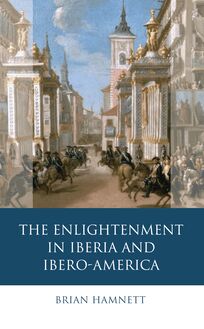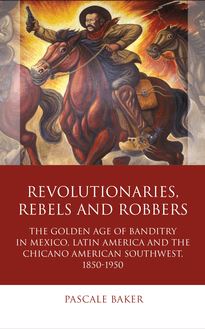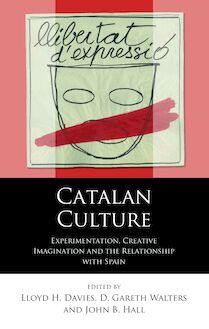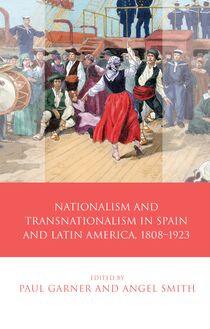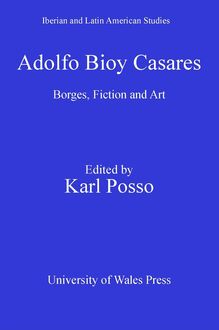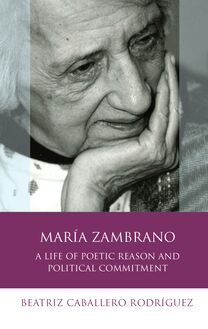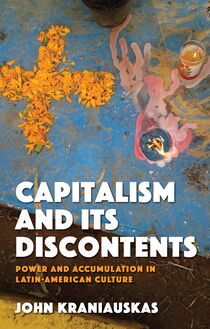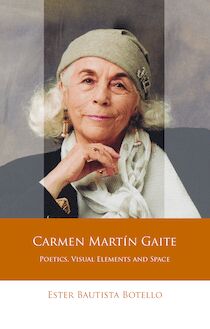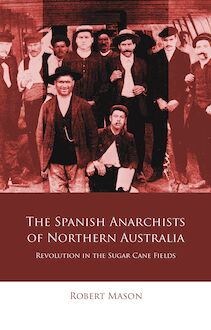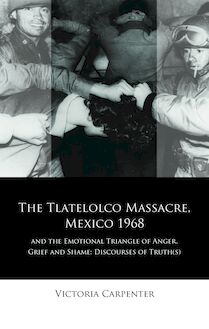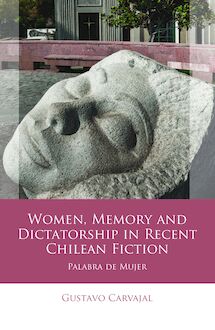-
 Univers
Univers
-
 Ebooks
Ebooks
-
 Livres audio
Livres audio
-
 Presse
Presse
-
 Podcasts
Podcasts
-
 BD
BD
-
 Documents
Documents
-
- Cours
- Révisions
- Ressources pédagogiques
- Sciences de l’éducation
- Manuels scolaires
- Langues
- Travaux de classe
- Annales de BEP
- Etudes supérieures
- Maternelle et primaire
- Fiches de lecture
- Orientation scolaire
- Méthodologie
- Corrigés de devoir
- Annales d’examens et concours
- Annales du bac
- Annales du brevet
- Rapports de stage
La lecture à portée de main
Vous pourrez modifier la taille du texte de cet ouvrage
Découvre YouScribe en t'inscrivant gratuitement
Je m'inscrisDécouvre YouScribe en t'inscrivant gratuitement
Je m'inscrisEn savoir plus
Vous pourrez modifier la taille du texte de cet ouvrage
En savoir plus

Description
This book reconstructs the poetics of Carmen Martín Gaite by viewing the concept of journey as a fundamental principle upon which she bases and elaborates her narrative writing of the 1990s. Five novels published in this period receive critical attention, all of which coincide with the last trips taken by the writer to New York: Caperucita en Manhattan (1990), Nubosidad variable (1992), La reina de las nieves (1994), Lo raro es vivir (1996) and Irse de casa (1998). To the extent that the journey is the essence of the narrative under consideration, the concept is analysed as an aesthetic practice and an attempt to identify a series of actions, which allow us to link the writer’s novels with two areas that have previously received only scant critical scrutiny: geography and the visual dimension. This book presents a comparative and interdisciplinary analysis of space in Martín Gaite’s narrative as well as in her collages, drawings and paintings.
Series Editors’ Foreword
List of figures Introduction
The Historical, Narrative and Poetic Path of Carmen Martín Gaite
The Poetics of Carmen Martín Gaite
The Construction of Space
Visual Elements in the Narrative of Martín Gaite
Conclusions
Notes
Bibliography
Index
Sujets
Informations
| Publié par | University of Wales Press |
| Date de parution | 09 janvier 2019 |
| Nombre de lectures | 0 |
| EAN13 | 9781786833655 |
| Langue | English |
| Poids de l'ouvrage | 1 Mo |
Informations légales : prix de location à la page 0,1900€. Cette information est donnée uniquement à titre indicatif conformément à la législation en vigueur.
Extrait
IBERIAN AND LATIN AMERICAN STUDIES
Carmen Martín Gaite
Series Editors
Professor David George (Swansea University)
Professor Paul Garner (University of Leeds)
Editorial Board
David Frier (University of Leeds)
Lisa Shaw (University of Liverpool)
Gareth Walters (Swansea University)
Rob Stone (University of Birmingham)
David Gies (University of Virginia)
Catherine Davies (University of London)
Richard Cleminson (University of Leeds)
Duncan Wheeler (University of Leeds)
Jo Labanyi (New York University)
Roger Bartra (Universidad Nacional Autónoma de México)
Other titles in the series
The Spanish Anarchists of Northern Australia: Revolution in the Sugar Cane Fields
Robert Mason
Paulo Emilio Salles Gomes: On Brazil and Global Cinema
Maite Conde and Stephanie Dennison
The Tlatelolco Massacre, Mexico 1968, and the Emotional Triangle of Anger, Grief and Shame: Discourses of Truth(s)
Victoria Carpenter
The Darkening Nation: Race, Neoliberalism and Crisis in Argentina
Ignacio Aguiló
Catalan Culture: Experimentation, Creative Imagination and the Relationship with Spain
Lloyd Hughes Davies, J. B. Hall and D. Gareth Walters
Catalan Cartoons: A Cultural and Political History
Rhiannon McGlade
Revolutionaries, Rebels and Robbers: The Golden Age of Banditry in Mexico, Latin America and the Chicano American southwest, 1850-1950
Pascale Baker
IBERIAN AND LATIN AMERICAN STUDIES
Carmen Martín Gaite
Poetics, Visual Elements and Space
ESTER BAUTISTA BOTELLO -->
UNIVERSITY OF WALES PRESS 2019
© Ester Bautista Botello, 2019
All rights reserved. No part of this book may be reproduced in any material form (including photocopying or storing it in any medium by electronic means and whether or not transiently or incidentally to some other use of this publication) without the written permission of the copyright owner. Applications for the copyright owner s written permission to reproduce any part of this publication should be addressed to the University of Wales Press, University Registry, King Edward VII Avenue, Cardiff CF10 3NS.
www.uwp.co.uk
British Library CIP
A catalogue record for this book is available from the British Library.
ISBN 978-1-78683-363-1
e-ISBN 978-1-78683-365-5
The right of Ester Bautista Botello to be identified as author of this work has been asserted in accordance with sections 77 and 79 of the Copyright, Designs and Patents Act 1988.
The publisher has no responsibility for the persistence or accuracy of URLs for any external or third-party internet websites referred to in this book, and does not guarantee that any content on such websites is, or will remain, accurate or appropriate.
Cover image: Carmen Martín Gaite. Biblioteca Digital de Castilla y León
Contents
Series Editors Foreword
List of Figures
Acknowledgements
Introduction
1 The Historical, Narrative and Poetic Path of Carmen Martín Gaite
2 The Poetics of Carmen Martín Gaite
3 The Construction of Space
4 Visual Elements in the Narrative of Martín Gaite
Conclusions
Notes
Bibliography
Series Editors Foreword
Over recent decades the traditional languages and literatures model in Spanish departments in universities in the United Kingdom has been superseded by a contextual, interdisciplinary and area studies approach to the study of the culture, history, society and politics of the Hispanic and Lusophone worlds - categories that extend far beyond the confines of the Iberian Peninsula, not only in Latin America but also to Spanish-speaking and Lusophone Africa.
In response to these dynamic trends in research priorities and curriculum development, this series is designed to present both disciplinary and interdisciplinary research within the general field of Iberian and Latin American Studies, particularly studies that explore all aspects of Cultural Production (inter alia literature, film, music, dance, sport) in Spanish, Portuguese, Basque, Catalan, Galician and indigenous languages of Latin America. The series also aims to publish research in the History and Politics of the Hispanic and Lusophone worlds, at the level of both the region and the nation-state, as well as on Cultural Studies that explore the shifting terrains of gender, sexual, racial and postcolonial identities in those same regions.
List of Figures
Frontispiece: Carmen Martín Gaite. Photograph by Joan L. Brown, New York City, 1980
Figure 1: Retahíla con nieve en Nueva York. © Herederos de Carmen Martín Gaite, 2005. Publicado originalmente por Ediciones Siruela, Madrid, España.
Figure 2: La visión de lo cotidiano en la narrativa a femenina. © Herederos de Carmen Martín Gaite, 2005. Publicado originalmente por Ediciones Siruela, Madrid, España.
Figure 3: Cover of Agua pasada. © Herederos de Carmen Martín Gaite, 2005. Publicado originalmente por Ediciones Siruela, Madrid, España.
Figure 4: Actions as an aesthetic instrument
Acknowledgements
I would like to thank Professor Catherine Boyle, whose supervision, patience and encouragement were invaluable during my PhD studies, and Dr Luis Rebaza Soraluz for helping me with my studies and my life in London.
I am also very thankful for the conversations and support of all my friends, especially Jennifer Chambers, Alejandra López, Inés Alonso, Marisol de Lafuente and Marta Cocco.
My love for my mother and my father and all my family, specially my sisters, without whom this would not have been possible.
Thanks to my extended family in Spain for their support and love.
Thanks to Colin Brent for his translations and his readings.
Thanks to Ignacio and Daniel. Their love and understanding were the main ingredients that helped me throughout this project.
Carmen Martín Gaite, 1980
Introduction
Carmen Martín Gaite, a Spanish writer from the Generación de los 50 , was always interested in reflecting on her own writing process. Testament to this is El cuento de nunca acabar. Apuntes sobre la narración, el amor y la mentira , first published in 1983 but started in 1973. As well as exploring and questioning herself on the act of narrating, she also documents the process of writing this text. The author considers it to be like a diary […] a kind of logbook 1 in which to offload the vicissitudes through which she lived while writing these notes on narration and life. El cuento de nunca acabar enables us to understand writing as a process that privileges dialogue and brings the possibility of creating links with the words of others. The book was still unfinished when Martin Gaite went to the United States for the first time. This is why the way in which she wrote it and all the emotions that she went through to bring it to its conclusion are of such interest. The result was the creation of a poetics centred around the process of writing. But how can we reconstruct a complete image of that poetics, and of which elements is it is made up?
First we must note that poetics is Carmen Martín Gaite s idea of how her own narrative should be. Given that the writer reflected on this subject for several years, the revision of other texts is important, allowing us to reconstruct, reset, trace or develop a cartography with a whole range of elements that make up the posited narrative of Martín Gaite. For this, I will draw upon the analysis of Agua pasada (articles, prologues and lectures, 1993), Pido la palabra (2002) and Cuadernos de todo (2002). In these, we witness the journey as the fundamental principle with which Martín Gaite develops her narrative in the 1990s.
I have selected four novels published after the visit of the writer to New York: Nubosidad variable (1992), La reina de las nieves (1994), Lo raro es vivir (1996) and Irse de casa (1998). Given the constant role of travelling in these texts, I will analyse the journey as an aesthetic practice and identify a series of actions that allow the narrative to be linked with two essential elements of her work: the construction of space and the visual. To do this, I will use the theories of Francesco Careri and Michel de Certeau. The former understands walking as an aesthetic instrument capable of describing and modifying those metropolitan spaces that often present a nature that should be understood and filled with meanings, rather than projected and filled with things . 2
The poetics of Martín Gaite lies in the journey. Therefore, it will be necessary to identify and analyse a series of actions linked with that concept, such as pasear ( to stroll ), desplazarse ( to move around ), orientarse ( to get one s bearings ), explorar ( to explore ) and deambular ( to wander ), among others. Through these actions, carried out in differing spaces, I identify different types of geographies in Martín Gaite s narrative: the domestic, the urban, the interior and the narrative. As well as explaining what each of these geographies consists of, I am interested in showing the view of the protagonists (in the writing of the 1990s) towards the diverse spaces that they passed through or inhabited. To do this, I will need to revise and analyse the function of the gaze in literature and in Martín Gaite s work in particular. I contend that actions such as contemplar ( to contemplate ), mirar ( to look ), espiar ( to spy ) or fisgar ( to snoop ) are the domain of the gaze and, taking into account the different meaning of each, Martín Gaite unites them to poeticise that a novel comes from all that which the eye contemplates, looks at, spies or snoops on. Let us look at the work of Mieke Bal on narratology and visuality. Bal discusses and analyses the way in which certain concepts - such as the gaze, the point of view, perspective and vision - shift or travel from one discipline to another.
The strategies identified in Martín Gaite s work correspond with the essential questions that will help to form her poetics. What is being looked at? How is it being looked at? Or, where is it being looked at from? It is important to observe how the obje
-
 Univers
Univers
-
 Ebooks
Ebooks
-
 Livres audio
Livres audio
-
 Presse
Presse
-
 Podcasts
Podcasts
-
 BD
BD
-
 Documents
Documents
-
Jeunesse
-
Littérature
-
Ressources professionnelles
-
Santé et bien-être
-
Savoirs
-
Education
-
Loisirs et hobbies
-
Art, musique et cinéma
-
Actualité et débat de société
-
Jeunesse
-
Littérature
-
Ressources professionnelles
-
Santé et bien-être
-
Savoirs
-
Education
-
Loisirs et hobbies
-
Art, musique et cinéma
-
Actualité et débat de société
-
Actualités
-
Lifestyle
-
Presse jeunesse
-
Presse professionnelle
-
Pratique
-
Presse sportive
-
Presse internationale
-
Culture & Médias
-
Action et Aventures
-
Science-fiction et Fantasy
-
Société
-
Jeunesse
-
Littérature
-
Ressources professionnelles
-
Santé et bien-être
-
Savoirs
-
Education
-
Loisirs et hobbies
-
Art, musique et cinéma
-
Actualité et débat de société
- Cours
- Révisions
- Ressources pédagogiques
- Sciences de l’éducation
- Manuels scolaires
- Langues
- Travaux de classe
- Annales de BEP
- Etudes supérieures
- Maternelle et primaire
- Fiches de lecture
- Orientation scolaire
- Méthodologie
- Corrigés de devoir
- Annales d’examens et concours
- Annales du bac
- Annales du brevet
- Rapports de stage
